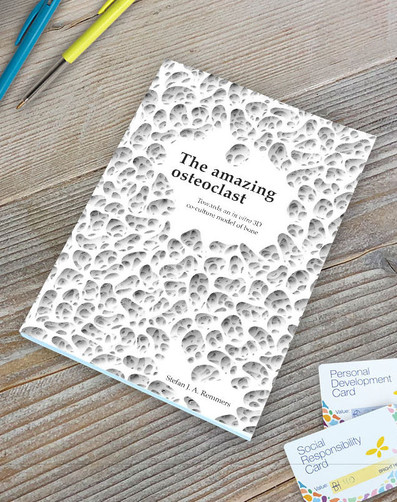
Bone remodeling on a cellular level is orchestrated by the bone forming osteoblasts, bone resorbing osteoclasts and regulating osteocytes. In bone diseases such as osteoporosis the balance between these cells is disturbed. Available treatment options can slow the progression of this degenerative disease, but until this day cannot stop or reverse this process. To better understand bone remodeling and develop more effective treatments, new methods of studying bone remodeling are needed. The aim of this thesis was to develop a human in vitro 3D osteoblast-osteoclast co-culture model in which both bone formation and resorption could be monitored over time. This was done by first executing a systematic review to identify all osteoblast-osteoclast co-cultures in published literature, from which all methodological information was extracted into a database. This provided an unprecedented amount of readily accessible information on osteoblast-osteoclast co-cultures. The differentiation and activity of osteoclasts was first studied in 2D before the results thereof were translated into a 3D model. This work culminated in the development of a human in vitro 3D osteoblast-osteoclast co-culture model of bone remodeling in which formation and resorption can be monitored over time non-destructively. The model is capable of pronouncing states of near-equilibrium, resorption, and formation after application of the corresponding stimuli. The 3D osteoblast-osteoclast co-culture model presented in this thesis can be used as an in vitro co-culture model of human bone remodeling and can be further developed for various applications in fundamental research, drug development and personalized medicine.
Download Thesis